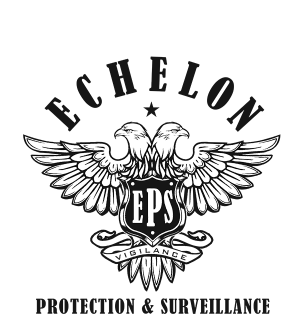Building & construction firms have a long list of responsibilities, worries and challenges. Many times, security planning falls low on the priority list. However, a simple calculation of prospective losses, liability and reputation-crushing costly delays shows that partnering with the right security company is a wise return on investment. Indeed, in many states, a security presence is now mandatory during certain phases of construction. In this blog installment, we’ve collected a few of our most relevant tips for performing a “smarter” construction site patrol.
1) “S” stands for… Stay aware of onsite assets
Security guards are often patrolling job sites that contain millions of dollars worth of construction vehicles, machinery, tools and building materials. During these phases, it’s vital that security officers stay fully informed of all subcontractors, visitors, deliveries and where the more costly assets are stored. This is best achieved through a consistent access control plan featuring daily logs, reporting and signage. High-value assets of interest to prospective vandals and thieves should be kept in a well-lit, fully fenced area and patrolled more often.
2) “M” stands for… Maintain a safe distance
Security guards must exercise extreme caution when addressing unknown visitors and trespassers. Any verbal engagement with unauthorized visitors should be done in a confident, authoritative tone at a safe distance. We train Echelon guards to provide a stern verbal warning, informing the offender(s) that they’re unlawfully trespassing and must leave the property immediately. Additionally, a guard may choose to let the perpetrator know that they’re under camera surveillance and the local police have already been notified. To avoid liability, a security guard should never put hands-on a trespasser unless it is in self-defense. The best overall security strategy is to deter — warn — call the police — and keep eyes on the offender until authorities arrive.
3) “A” stands for… Arrive prepared for anything
To protect your job site against common and unexpected challenges — your onsite security guards must come prepared with the proper equipment. If the job site is not in a high crime area, there is no need for construction site guards to carry a weapon while on patrol. However, whether your guards are armed or unarmed, be sure they have the tools they need to contend with unwanted or illegal activity such as trespass, vandalism, union issues, fire or hazard. Basic equipment should include a smartphone, flashlight, emergency call-down list, site map, and a working knowledge of any emergency shut-off switches, sprinkler or alarm systems. Knowing what to do in an emergency will improve response time in case of injury. There are many other defensive items that may be an option as allowable within your state jurisdiction.
4) “R” stands for… Random patrol schedules are a great strategy
Security guards are typically asked to inspect various checkpoints while on patrol to ensure key points are being watched. We use technology in which the guards scan the checkpoint with a smartphone application to verify their rounds. However, if patrol duties are not done properly, they can create unintended opportunities for criminal activity. If guards become complacent by taking the same route to their checkpoints, their movements become easy to track. Altering your patrols also can create the appearance of more robust security coverage. Being predictable makes your job site vulnerable, so smart security companies direct their guards to vary their patrol schedule by day, route and time, including backtracking their route at random.
5) “T” stands for…Tactical uniforms improve performance
Make certain that your guards are outfitted for peak performance. A highly visible security presence is the best deterrent, so it’s important that your guards are outfitted with a tactical, seasonally appropriate, branded, professional and comfortable uniform that includes; ID badge, safety vest and hard hat. Security guards are among the top occupations where long periods of standing, walking and running are required. All guards should have footwear that is comfortable during a long shift, protects their feet from harmful debris and keeps them from slipping. A poorly considered choice of uniform may restrict movement and put guards at a disadvantage during unexpected or critical situations.
6) “E” stands for… Expect the unexpected
Something unexpected can happen any moment a guard is on security patrol duty. The best security firms train their guard’s to be vigilant. Professional security guards are always mindful while performing their patrols. They make it a point to periodically stop, look around, and carefully listen to their surroundings. Although it sounds obvious, these planned engaged pauses are part of the situational awareness needed for optimum security performance.
7) “R” stands for… Remember lawful limits
Know which situations require specialized support or assistance. Remember, your guards are trained to observe, report, deescalate, and call the proper authorities. Although many security guards have state-certified training such as ACT 235, SORA or NASRO, do not expect them to be trained to handle civil unrest, public safety hazards, bomb scares, engineering issues or personal injuries. Be certain you know what your guards can and cannot do under the law, and determine the proper protocol to deal with extraordinary circumstances — always have emergency numbers ready and contact the trained professionals best suited to handle a situation.
Since 2001, successful building & construction companies have chosen Echelon Protection & Surveillance to secure and protect their job site from unwanted and illegal activity, including theft, fire, vandalism, trespassing and safety hazards that can cause costly delays. Call 610-831-0277 or email sales@epsagents.com today!


